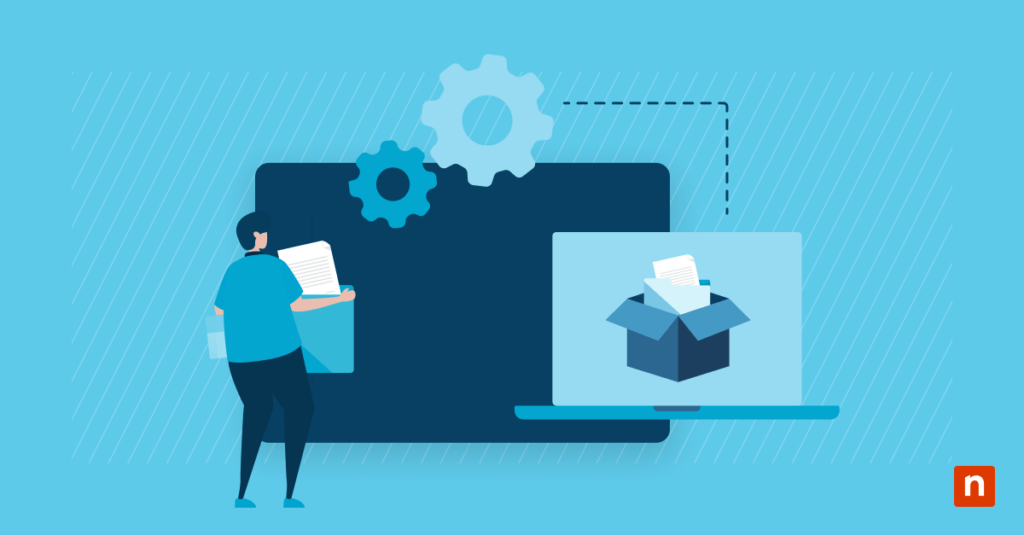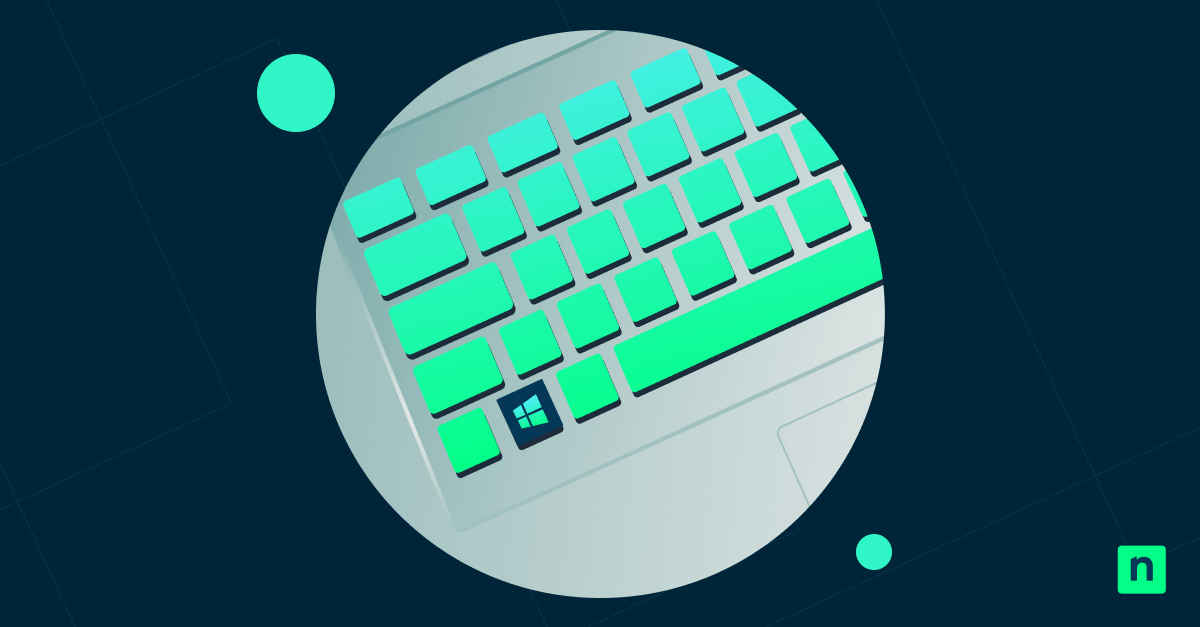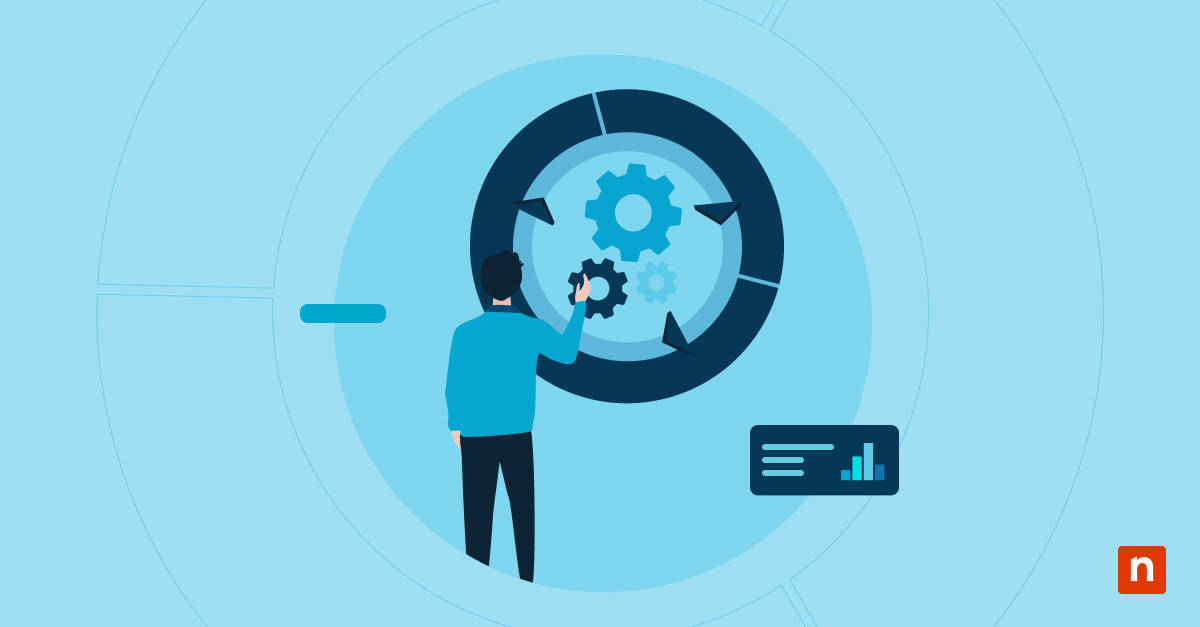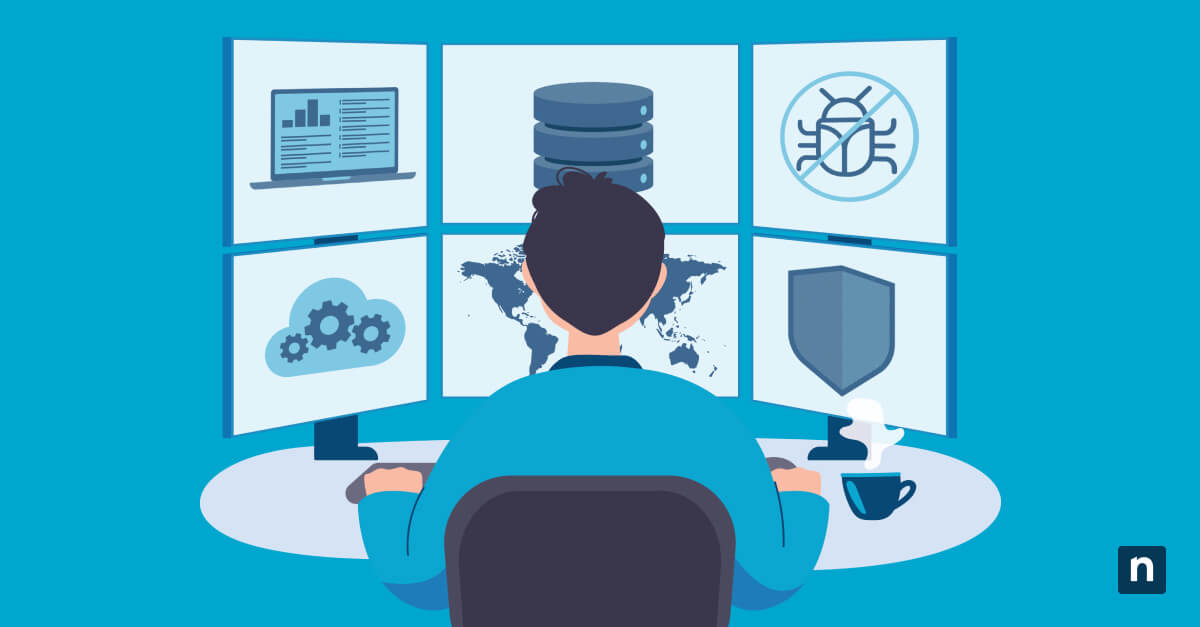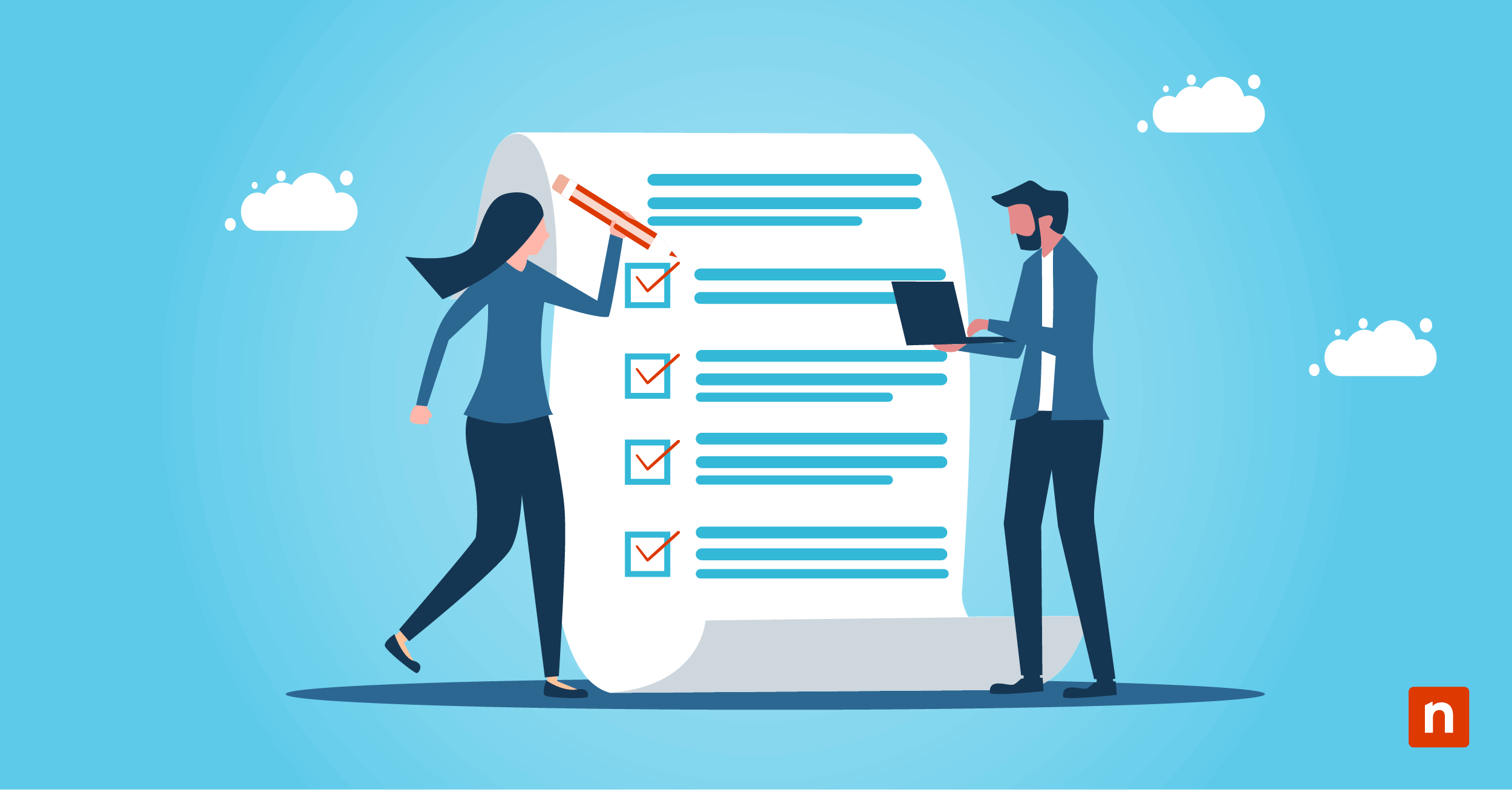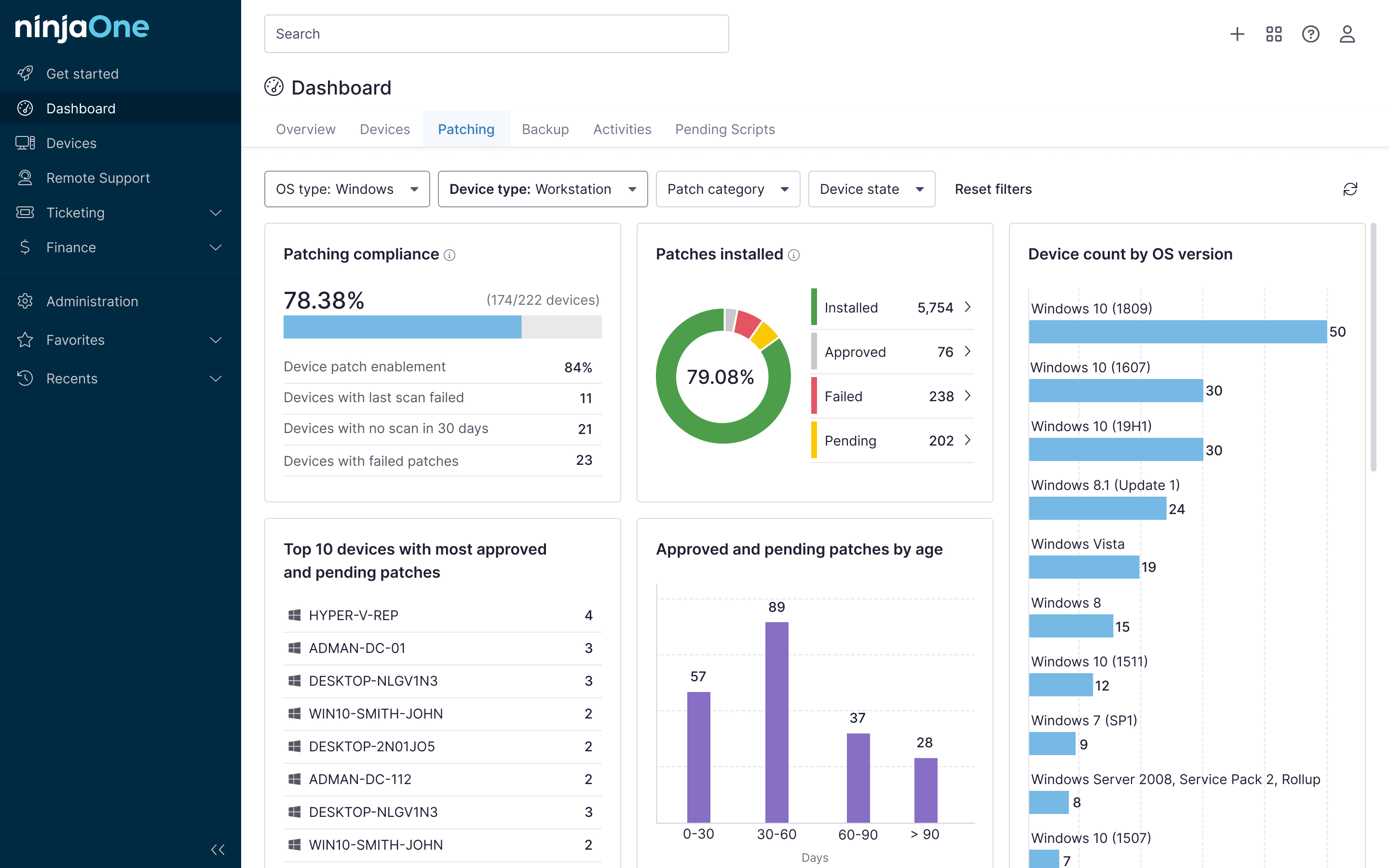Windows 10 primarily supports multiple types of applications, two of the most common being traditional Win32 desktop apps and Windows apps. Once removed from a PC, Win32 applications normally uninstall for all users, while Windows apps only uninstall per account. Due to the different uninstall behaviors between desktop and Windows apps, manually removing multiple apps gets harder as you scale up the process.
Say you’re managing an environment with more than a hundred endpoints that are only required to run two applications. Naturally, you’d want to remove unnecessary apps before creating a disk image for provisioning—allowing faster boot times, fewer distractions, consistent UI, and a smaller attack surface across all devices.
If your scenario is similar to the example above, use this guide to learn how to uninstall apps in Windows 10. You can also get answers to common questions and troubleshoot any issue that might come along the way.
Different methods to uninstall apps on Windows 10
There are several ways to uninstall apps on Windows 10, and depending on your use case, you’d prefer one over the other. Some approaches in this guide are quick and simple, while others require more work, especially when deploying this change to multiple devices.
⚠️ Take note: For a smooth experience, ensure you’re using any edition of Windows 10 version 1607 or later and have administrative privileges on your device. Familiarity with PowerShell is required for the steps with scripting and automation. Additionally, system-critical apps, such as Microsoft Edge and Defender, are protected and can’t be removed using the methods outlined below.
Method 1: Uninstall apps from the Start Menu
- Click the Windows Start button located on the left-most part of the taskbar by default.
- Type the name of the app you want to remove (e.g., Solitaire & Casual Games).
- Hover your cursor over the app, right-click, and select Uninstall if available. If the Uninstall button is unavailable for the app you’re trying to remove, you can uninstall it via PowerShell.
- Confirm the action when prompted by Windows.
Method 2: Uninstall apps using Windows Settings
- Press Win + I to open Windows Settings.
- Find and click the Apps icon.
- Scroll down the right panel under Apps & Features and left-click the app you want removed.
- On the expanded box, press Uninstall and confirm the process on the pop-up.
- Once the process ends, close Windows Settings.
Note: Some desktop apps automatically run an uninstall.exe program when uninstalled. Follow the steps and prompts inside the uninstaller.
Method 3: Uninstall legacy Win32 apps via the Control Panel
- Open Run by pressing Win + R, type control, then hit Enter.
- Inside the Control Panel, select Programs and Features.
- Find and left-click the program to uninstall within the app list.
- After highlighting the selected program, click the Uninstall button located in the toolbar.
If a UAC prompt appears, press Yes. - If the selected program runs an uninstaller, follow the app’s uninstallation process.
- After finishing the uninstallation process, exit the Control Panel.
Method 4: Uninstall UWP or built-in apps using PowerShell
Part 1: Using PowerShell to remove UWP or built-in apps for the current user
- Launch Run using the Win + R hotkey, type PowerShell, then hit Enter.
- Input the command Get-AppxPackage | Select Name, PackageFullName to get a list of all installed Windows apps inside your user account.
- Use the command remove-appxpackage PackageFullName to remove a specific app.
- Change PackageFullName with the corresponding full name of the app want to uninstall.
- For example, removing XBox:
remove-appxpackage Microsoft.Xbox.TCUI_1.24.10001.0_x64__8wekyb3d8bbwe
- Repeat step 3 for all targeted apps to uninstall for a specific user.
Part 2: Remove or uninstall apps for all users via PowerShell
- Open Run, type PowerShell, and then press Ctrl + Shift + Enter.
- List apps for all users by entering Get-AppxPackage -AllUsers | Select Name, PackageFullName.
- Use the command remove-appxpackage -AllUsers PackageFullName to remove a specific app for all users.
- Substitute PackageFullName with the target app’s corresponding PackageFullName.
- For example, command to remove MS Teams:
remove-appxpackage -AllUsers MSTeams_25094.310.3616.953_x64__8wekyb3d8bbwe.
- Repeat step 3 for other apps you wish to remove.
Part 3: Remove provisioned apps for future users using PowerShell
- Open an elevated PowerShell, and enter the command Get-AppxPackage -AllUsers | Select Name, PackageFullName.
- To remove an app for future accounts, enter the following command line:
- Get-AppxProvisionedPackage -Online | Where-Object {$_.DisplayName -eq “<AppName>”} | Remove-AppxProvisionedPackage -Online.
- Change AppName to the correct Name that corresponds to the targeted app in the list.
- For example, the command to remove MS Teams as a provisioned app:
Get-AppxProvisionedPackage -Online | Where-Object {$_.DisplayName -eq “<MSTeams>”} | Remove-AppxProvisionedPackage -Online.
- Get-AppxProvisionedPackage -Online | Where-Object {$_.DisplayName -eq “<AppName>”} | Remove-AppxProvisionedPackage -Online.
- Repeat step 2 for other provisioned apps you want to remove for all future accounts.
- Close PowerShell once you’re done.
Solutions to common issues encountered when uninstalling apps
Issue: PowerShell command fails
If you’re trying to delete an app for all users or preventing it from being provisioned for new users, ensure that you’re running PowerShell as an administrator to avoid command failures. Additionally, double-check that you’re using the accurate PackageFullName or AppName as listed by the Get-AppxPackage | Select Name, PackageFullName command.
Issue: App reinstalls after sign-out or account creation
When an app is provisioned for users, it remains in the system image, and even deleting it for users won’t stop it from reappearing. However, you can easily remediate this issue by using an elevated PowerShell to remove the provisioned app from reappearing after uninstallation.
Issue: App doesn’t appear in Settings or Start
If the app you’re trying to uninstall doesn’t appear in the Start menu or Apps and Features in Settings, you can use the command Get-AppxPackage -AllUsers | Select Name, PackageFullName using an elevated PowerShell. This command lists down both hidden and system apps that don’t normally show up via Control Panel, Windows Settings, or Start menu.
Issue: Remove-AppxPackage appears to run but has no effect
Double-check if the app you’re trying to remove is a system-protected package, as some UWP apps can’t be removed via PowerShell. For instance, apps like Microsoft.WindowsStore and Microsoft.Windows.ShellExperienceHost are protected and resistant to removal.
Additionally, verify if you’re using the correct user scope when trying to use the command remove-AppxPackage, as it’s a command for current users only. It’s also important to remember that the full command should be remove-appxpackage PackageFullName, where PackageFullName should reflect the exact characters that correspond to your target app.
FAQs when uninstalling apps on Windows 10
Can I remove Microsoft Store or Microsoft Edge?
The short answer is no. Both Microsoft Store and Microsoft Edge are considered protected system components and are tightly integrated with critical system apps, such as Windows Update. That said, forcefully removing them can break the functionality of Windows features and updates or cause user account issues.
What’s the difference between Remove-AppxPackage and Remove-AppxProvisionedPackage?
Remove-AppxPackage is a command line that’s mainly used to remove an app from a current user profile. On the other hand, Remove-AppxProvisionedPackage aims to remove a specific app from a system image, preventing the targeted app from automatically installing for new users.
Do Win32 apps uninstall for all users?
Win32 applications are traditional desktop applications, such as Microsoft Office programs, and are installed system-wide; however, not all Win32 apps are installed for all users. If your Win32 uninstallation process doesn’t need administrative privileges, then you’re removing a per-user application. Conversely, if an uninstall process asks for administrative rights, then it’s making a system-wide removal.
Another way to check if an app is per-user or system-wide is by looking at its installation location. Per-user installation locations are by default found under C:\Users\<UserName>\AppData\Local\, while system-wide installations are inside C:\ProgramFiles\ or C:\ProgramFiles (x86)\.
Can UWP apps be uninstalled for all users at once?
UWP apps are installed per user and cannot be uninstalled for all users at once, unlike administrative-level Win32 application uninstallations. For instance, removing a UWP app through the Control Panel won’t delete it for all users at once.
Technically, you can remove the app for all existing users by inputting the command remove-appxpackage -AllUsers PackageFullName in an elevated PowerShell, but this won’t prevent the app from being provisioned for future users. To also remove an app as a provisioned app for new users, you can enter the command line Get-AppxProvisionedPackage -Online | Where-Object {$_.DisplayName -eq “<AppName>”} | Remove-AppxProvisionedPackage -Online using an elevated PowerShell.
How do I uninstall an app in PowerShell?
Uninstalling an application using PowerShell can be done by doing the following steps:
- Press Win + R, type PowerShell, then hit Enter.
- Type and enter the command Get-AppxPackage | Select Name, PackageFullName.
- To uninstall a program, type remove-appxpackage PackageFullName.
- Replace PackageFullName with the app’s appropriate PackageFullName.
- E.g., Microsoft.Xbox.TCUI_1.24.10001.0_x64__8wekyb3d8bbwe
- Repeat the process for other apps you want to uninstall.
Optimize deployment by uninstalling unnecessary apps in Windows 10
For administrators managing Windows 10 environments, understanding how to uninstall both desktop and Windows applications is critical for app provisioning, compliance, and overall security. The simplest way to delete user-level applications is through Windows Settings or the Start Menu. When removing legacy, enterprise, or Win32 applications, the best way to approach this is through the Control Panel.
On the flip side, leveraging PowerShell when uninstalling Windows 10 apps provides the best scalability, especially within automated and multi-user scenarios. When uninstalling apps using PowerShell, remember to also remove your target app as provisioned to avoid reinstallation upon sign-out. Lastly, always test removal procedures using a local machine before deploying it to an environment to avoid network-wide errors and mistakes.
Quick-Start Guide
NinjaOne provides several methods to uninstall apps in Windows 10, including:
- Win32 Apps:
- NinjaOne can uninstall Win32 apps through various methods:
- Manual uninstall command:
msiexec /x $product.IdentifyingNumber /quiet /norestart Specific uninstall scripts for various software like Box Sync, iTunes, Google Earth Pro, etc.
- Manual uninstall command:
- NinjaOne can uninstall Win32 apps through various methods:
- UWP Apps:
- NinjaOne’s scripting capabilities suggest you can create custom scripts to remove UWP apps.
- Built-in Apps:
- NinjaOne’s scripting flexibility allows for creating custom uninstallation scripts.
Additional notes:
- Uninstallation can be done through the NinjaOne console
- PowerShell scripts can be used for more complex uninstallation scenarios
- Some app uninstallations may require administrative privileges

